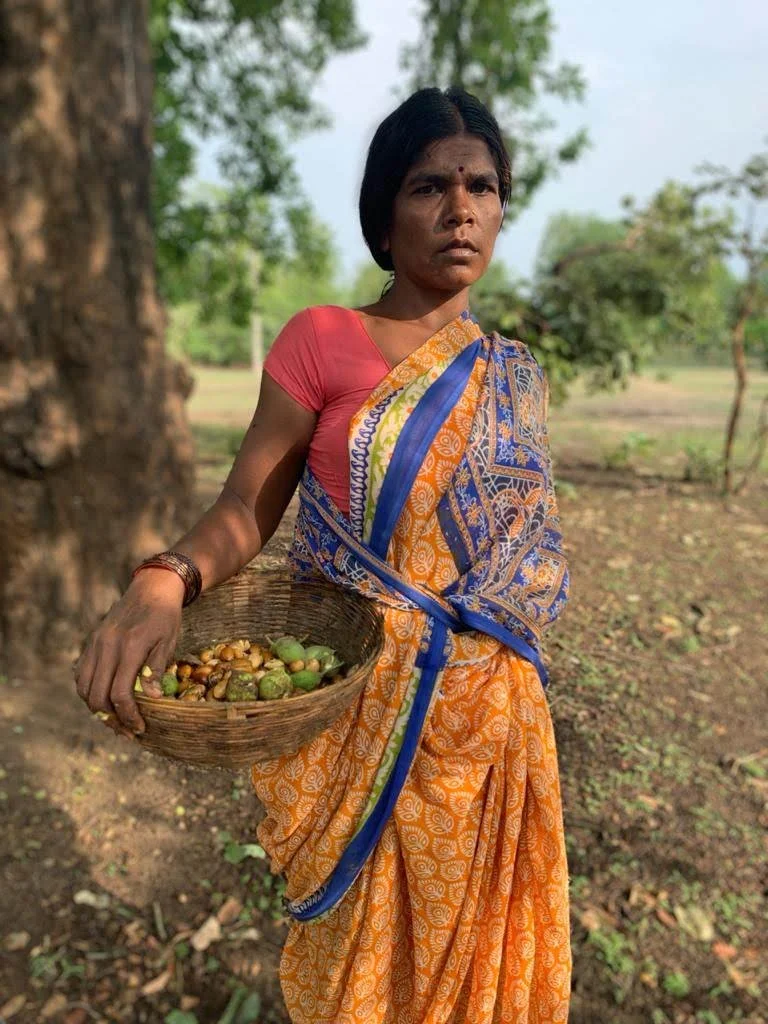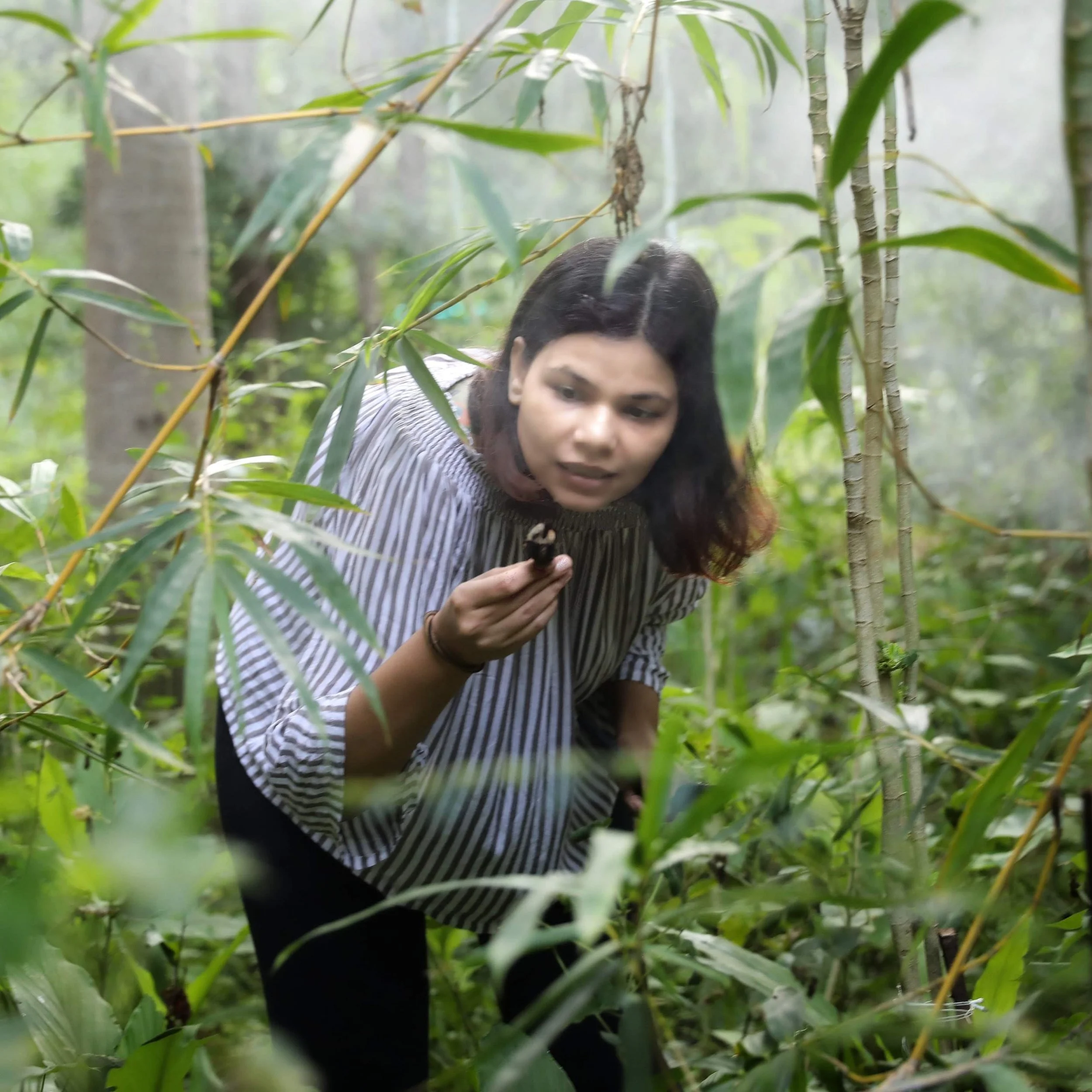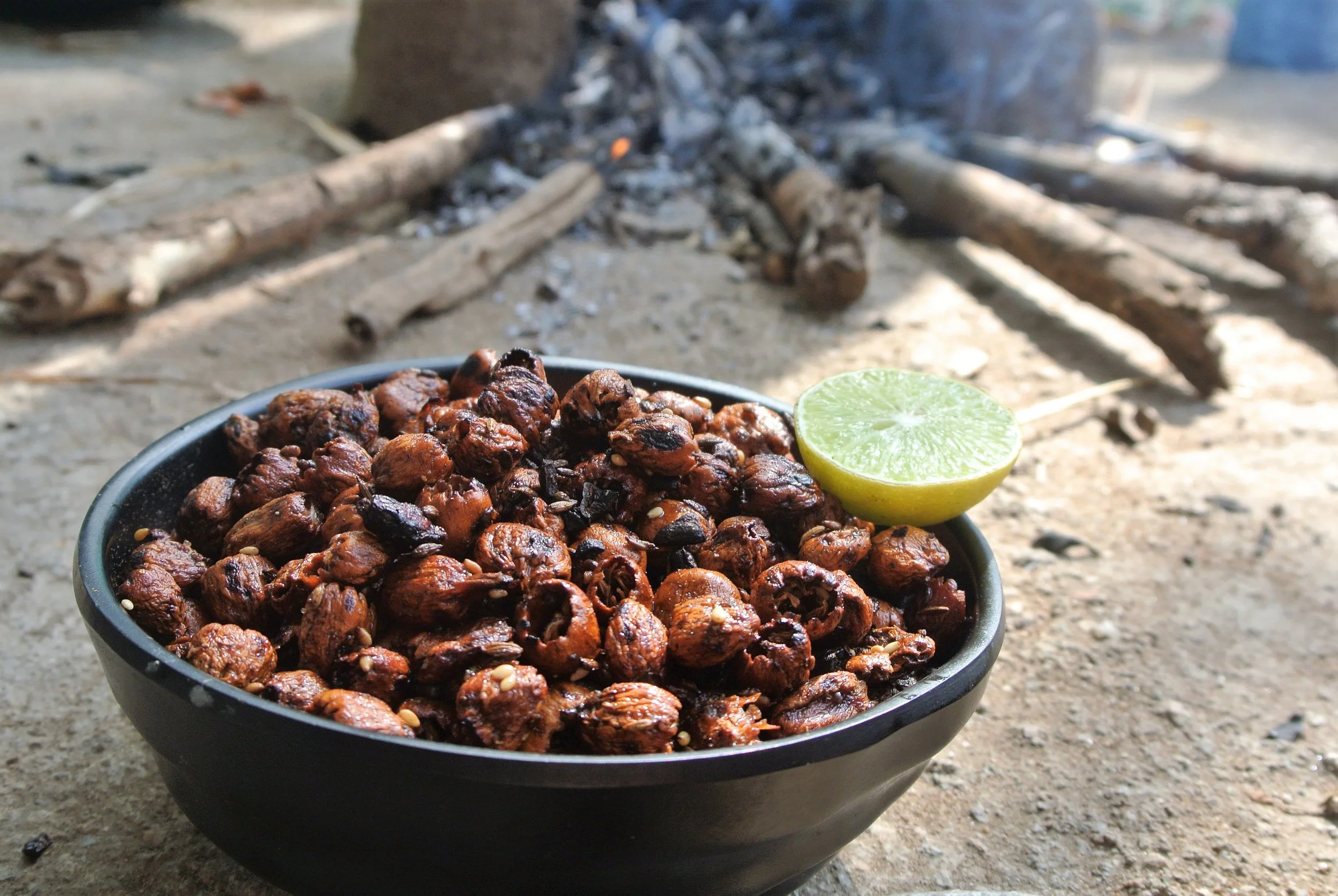Beyond the Bottle: The Lost Wisdom of the Mahua
Photo Credit: Wikimedia Commons
Every March and April, across the forested belt of central India, entire communities are drawn to the heady aroma of a certain tree in bloom. The forest floor is carpeted with creamy-white blossoms. Some sweet, sugary, and some on the ground are already beginning to ferment under the sun. For those two months, the air carries the unmistakable scent of these fallen mahua flowers.
Across villages in Chhattisgarh, Madhya Pradesh, Odisha, and parts of Jharkhand, Maharashtra, and Andhra Pradesh, mahua (Madhuca longifolia), or the Indian Butter Tree, is collected, dried, pressed, consumed, and traded. For many forest-dwelling communities scattered across the jungles of central India (the Gonds, Bhilalas, Baigas, Oraons, and many others), mahua represents food security, medicine, income, and memory. Its flowers, seeds, bark, and leaves are used throughout the year, forming an essential part of local diets and livelihoods. Songs and oral poetry passed down through generations sing its praises. Seasonal cycles guided by natural elements like the mahua blossom shape their calendars, feeding both body and culture.
In mainstream media, though, mahua is rarely spoken of in these terms. The name is most commonly associated with a local liquor, home-brewed, dangerous, often illegal, and shrouded in a mix of intrigue and stigma. The broader cultural and ecological knowledge tied to the tree is sidelined. Controversy, after all, travels faster than culinary context.
A knowledge system at the brink of vanishing
The flowers of the mahua are gathered each morning by women, children, and elders by hand. While the fresh flowers are pulpy but mild in taste, as they dry, their natural sugars concentrate, and give them a chewy, raisin-like texture. These dried flowers are preserved for months and used to make porridges, halwas, jams, chutneys, pickles and syrups. It is also a vegan substitute for honey. Mahua laddoos, made using the dried flower and local grains, are prized for their nutritional density, for fixing haemoglobin levels and having a vitamin and nutritional profile that one looks for in supplements.
In Odisha, the fruits, which ripen a few weeks after flowering, are called tol and turned into stir-fries, curries, fritters, and even chaat. The fruits are parboiled, tossed with mustard and cumin, or dredged in rice flour and shallow-fried to create snacks like pithau bhaja.
The seeds hidden within the fruit are small capsules of oil and protein. Even the leaves are boiled into a decoction and given to lactating mothers to aid recovery. The bark features in traditional remedies. In fact, the cultural and ritual uses of mahua liquor are still considered sacred by many Adivasi communities. It is not shameful or taboo within its original context. It is offered during births, marriages, and village festivals. A few drops are placed on a newborn’s navel, a glass shared during long days in the field.
“I had no idea what mahua even was until I moved to the forest,” shares Harshita Kakwani, a chef and an entrepreneur who lives in the buffer zone of Pench Tiger Reserve in Madhya Pradesh. “It was only after seeing people here gathering the flowers and speaking about them that I got curious. I’d once read that mahua was nutritious, so I began months of research. What struck me most was how little people here themselves knew, or believed, about its value beyond liquor. With the flower’s commercialisation, all the other traditional uses that were once a part of daily life had either faded into vague memory or disappeared entirely, especially for the younger generation. I once took a community member with me to Nagpur to meet someone who still knew mahua recipes. At that moment, I realised that we were both starting from the same place.”
An ingredient with ample colonial baggage
Despite its central role in feeding and healing communities, the mahua tree has long been entangled in a web of colonial distortion and moral panic. What indigenous communities worshiped, revered and ritually conserved as a food and medicine source was reduced, in the eyes of the British Raj, to a “dangerous intoxicant,” something to be controlled, taxed, and, if needed, outlawed.
In 1892, the Bombay Government introduced the Mhowra Act, one of several legislations aimed at regulating the collection and trade of mahua flowers, especially their use in home-brewed liquor. But this wasn’t a matter of public health. It was economics. By criminalising indigenous brewing, the British could protect the profits of imported European liquors while asserting surveillance over tribal economies.
It wasn’t just the mahua tree that faced this imperialist imposition. The very landscapes that once provided a biodiverse diet, mahua flowers, roasted sal seeds, water chestnuts, fish, had been privatised or degraded. Trees once protected through taboos and festivals now belonged to landlords or were declared part of reserved forests.
This combination of land dispossession and food criminalisation had real consequences. As traditional fermentation and food preservation techniques were branded illegal or unhygienic, dependency on market-bought alternatives rose. In the process, the forest communities lost access to essential foods, they were stripped of dignity, ecological wisdom, and control over their own nutrition.
How mahua moves between home and market
Photo Credit: Chef Harshita Kakwani
Seasonally, the tree follows a distinct rhythm. The flowers are collected and if their harvest exceeds household needs, they sell the surplus to kochiyas, or local traders, who aggregate these flowers to later sell at larger markets or store them for off-season demand. Many of these same families must return to the market post-monsoon, buying back dried mahua for their ritual brews, especially for marriage ceremonies, harvest festivals, or village gatherings.
So, even as mahua has entered formal market structures, its cultural value remains embedded in domestic and ritual time. Harshita shares “Mahua seed oil was once routinely used for cooking in this region. That’s no longer the case because the traditional oil extraction methods, and the knowledge systems behind them, have either been entirely lost or are actively fading. Earlier, every village had its own method and mechanism. Then, a cluster of 7–10 villages would rely on one shared system. Now, the nearest place to get oil extracted from where I live in Pench is nearly 200 kilometers away.”
Despite the bonds that communities still manage to have with the mahua tree, its mainstream image continues to be shaped by stigma. However, this narrative can shift. As conversations around sustainable agriculture, indigenous knowledge, and climate-resilient crops gain traction, mahua is making its way back into urban kitchens. Chefs and food entrepreneurs are exploring its floral syrup in desserts, incorporating dried flowers into granola, and experimenting with savoury preparations. Yet this rediscovery must be rooted in respect and equity.
Mahua is not simply a "forgotten" ingredient. It was never forgotten by those who depended on it. What has been forgotten is the value of decentralised, intergenerational knowledge, wisdom passed through songs, rituals, and lived experience. To reimagine our food futures, we must find value in taking a step back and looking to these rooted traditions.




